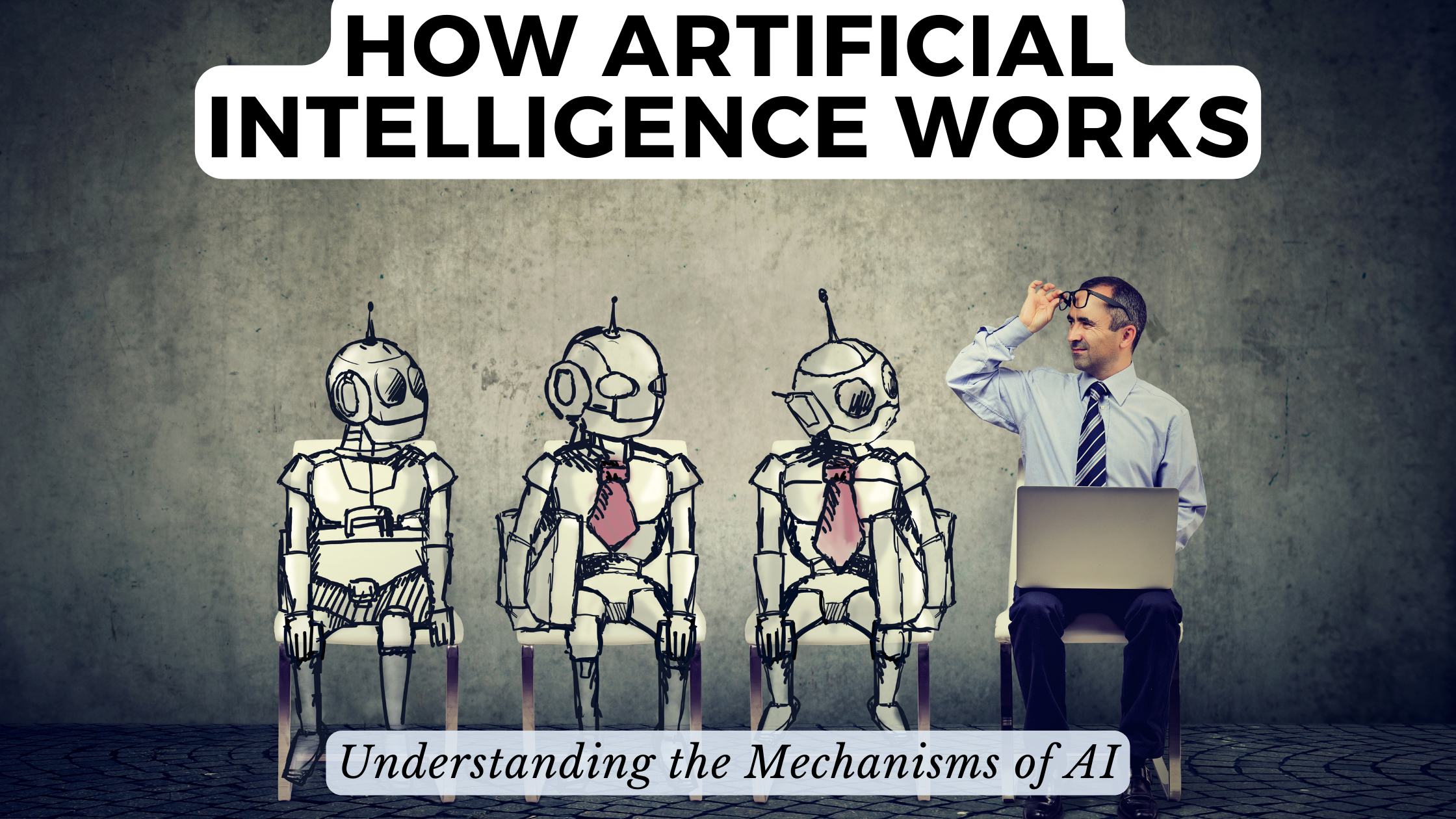How Artificial Intelligence Works: Understanding the Mechanisms of AI
- AI Image Generators Software AI Writing Assistant Popular Tools AI Tools


How Artificial Intelligence Works: Understanding the Mechanisms of AI
Artificial Intelligence (AI) has become an integral part of our daily lives, influencing everything from personal assistants to complex decision-making processes. In this comprehensive exploration, we’ll unravel the intricacies of how AI works, from its foundational concepts to real-world applications, providing insights that cater to both beginners and tech enthusiasts.
Demystifying the Mechanisms of AI
1. Machine Learning Algorithms:
AI’s core functionality lies in machine learning algorithms. These algorithms enable systems to learn patterns from data, improving their performance over time without explicit programming. Supervised learning, unsupervised learning, and reinforcement learning are pivotal in this process.
2. Neural Networks and Deep Learning:
Inspired by the human brain, neural networks are the building blocks of deep learning. Layers of interconnected nodes process information hierarchically, allowing AI systems to recognize complex patterns and make sophisticated decisions.
3. Natural Language Processing (NLP):
NLP equips AI with the ability to understand and generate human language. It is the driving force behind chatbots, language translation, and sentiment analysis, enhancing interactions between machines and humans.
4. Computer Vision:
AI’s visual perception capabilities, known as computer vision, enable machines to interpret and make decisions based on visual data. This is fundamental in applications like facial recognition, object detection, and autonomous vehicles.
5. Reinforcement Learning:
Mimicking how humans learn from trial and error, reinforcement learning allows AI systems to make decisions by receiving feedback based on their actions. This is crucial in scenarios like game-playing algorithms and robotic control.
SaaS Products Transforming How AI Works
1. TensorFlow:
For Open-Source Machine Learning Framework TensorFlow simplifies the development and deployment of machine learning models, empowering developers to implement AI solutions seamlessly.
2. PyTorch:
For Deep Learning Framework PyTorch is widely used for building and training deep learning models. Its dynamic computational graph makes it a favorite among researchers and practitioners.
3. IBM Watson:
For AI-Powered Solutions IBM Watson offers a suite of AI-powered tools and services, including natural language processing and machine learning, catering to diverse business needs.
4. Microsoft Azure AI:
For Cloud-Based AI Services Azure AI provides a comprehensive set of AI services, from computer vision to language understanding, making it accessible for businesses to integrate AI capabilities.
5. Google Cloud AI:
For End-to-End AI Solutions Google Cloud AI offers a wide array of AI services, including machine learning, natural language processing, and translation, enabling businesses to harness the power of AI.
Conclusion: Navigating the AI Landscape
As we conclude this journey into understanding the mechanisms of AI, it’s evident that AI’s evolution is dynamic and transformative. From machine learning algorithms to practical applications, AI continues to reshape industries, and with the right SaaS tools, businesses can leverage its potential effectively.
Discover the relevance of AI in your SaaS stack with Subscribed.FYI. Unlock exclusive deals on AI-driven tools, providing you with the essential resources to incorporate AI seamlessly into your workflows.
Relevant Links:
- TensorFlow
- PyTorch
- IBM Watson
- Microsoft Azure AI
- Google Cloud AI
- Subscribed.FYI
- Subscribed.FYI Deals





